
Recent Blog Posts
October 15, 2013
Fitness Podcasts
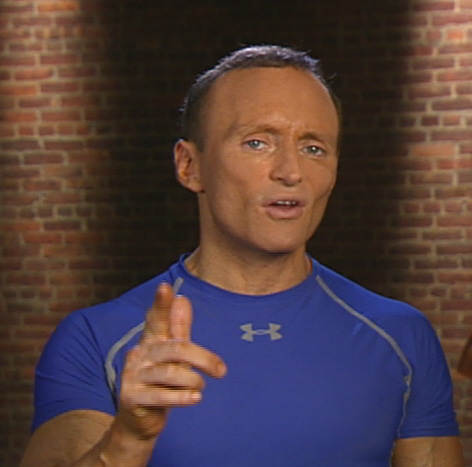
Happy to report that I’ll be doing regular fitcasts with my brother-from-another-mother, Bret Contreras, which we somewhat unoriginally call the B & B Connection (what’s in a name, right?). We’ll be discussing the practical application of research on a variety of fitness topics, objectively delving into some of the more controversial issues that currently exist. Each fitcast will be limited to 30 minutes (translation: we’ll cut right to the meat of the topic without any fluff).
Our inaugural fitcast covered the mechanisms of muscle hypertrophy. We explored my review paper, The mechanisms of muscle hypertrophy and their application to resistance training, with specific emphasis on the roles of mechanical tension, metabolic stress, and myodamage on muscle development. For anyone interested in maximizing their muscle mass, this fitcast will serve as a primer to help with optimizing exercise program design.
In our second fitcast we tackled the hotly debated topic of high-intensity resistance training (HIT). For those who don’t know, HIT is a catch-all for single-set training. The discussion was spurred by a recent research study showing that single set training was equally as effective as multi-set training in improving measures of upper body strength. As is often the case, however, the devil is in the details. What does not get mentioned in the abstract (or anywhere in the discussion, for that matter), is that the “single set” group actually performed one set of three exercises for each muscle group. Given that the subjects trained three times per week, this amounted to nine sets per muscle per week. Not exactly what I would consider a “single set” routine, and certainly not consistent with what HIT pioneers such as Ellington Darden have prescribed as optimal for muscular adaptations. Understand that this by no means invalidates HIT as a potentially viable approach. As Bret and I discuss, the issue on training volume ultimately comes down to your personal goals. I highly encourage you to give this one a listen and let us know your thoughts on the topic.
Suffice to say, I’m very much looking forward to our future B & B fitcasts. Stay tuned.
In addition to my collaboration with Bret, I’ve been interviewed on a number of other sites recently. Here’s a rundown of each:
embedded by Embedded Video
Okay, gotta get back to work on my dissertation now. In the meantime, hope this provides you with enough listening enjoyment for the time being!
Brad
October 29, 2012
MAX Muscle Podcast
Here is a podcast that I did with my publisher, Human Kinetics, discussing aspects of my new book, The MAX Muscle Plan. It’s a wide-ranging interview where I delve into topics such as:
Click on the arrow below to listen to the podcast:
September 8, 2012
Interview with Fitness Marketing Expert Jon Goodman
Here is an interview I did with Jonathan Goodman. For those who don’t know, Jon is a rising star in the field of fitness marketing. In particular, he has an expertise in the use of social media as a publicity tool. Jon also is the founder of the Personal Training Development Center, an excellent resource on all aspects of career-building for personal trainers. And he’s also affiliated with Girls Gone Strong, a popular site for female strength training.
Quick story: Jon approached me a couple years back about getting involved with the site. I politely declined, stating that I really didn’t have the time given my other commitments. Jon didn’t take ‘no’ for an answer. A couple month’s later, I was doing a book signing at a fitness conference in Toronto and Jon appeared at the event to speak to me about it in person. Through his persistance and communication that the endeavor wouldn’t require much of my time, I ultimately agreed to his request. Ever since, I’ve been consistently impressed with the content he puts out and his mission to enhance the quality of those in the field. I think the information he discusses here in this interview should be of interest to everyone, as basis of these principles apply to all fields. Enjoy!
You recently left your job as a successful personal trainer. What motivated your decision and what are you currently doing?
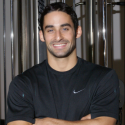
It was a hard decision and I already miss it. Unfortunately I found that I wasn’t giving my clients enough attention. My focus was on my various web ventures. I feel that I can reach more people by scaling my efforts than working one on one. It wasn’t fair to continue charging my clients a premium so I stepped aside. I’m lucky in that I worked at a gym with an amazing training team knowing that my clients are all looked after.
I have a couple major projects on the go:
-
1) The PTDC (Personal Trainer Development Center) is growing faster than ever. We are putting together some smallish manuals right now and have another seminar happening in Toronto on October 6/7th. It’s shaping up to be a great event and I’m excited for it.
2) MightyTrainer took a bit of a hiatus. We launched the comic with a lot of buzz but it quickly died off as the strips weren’t good enough. Teiko and I have revamped them and are releasing comics now that are better then ever. The crux is that we take all of the silly things that happen in the fitness world and blow them so far out of proportion that everybody laughs.
3) Girls Gone Strong has just launched their website. I’ve been working with them behind the scenes for a couple months and am really excited to see the movement take off. They’re the brains behind the operation but I am acting as a manager and social media guy.
4) I have just started to write my 3rd book. “Ignite the Fire: The Secrets to Building a Successful Personal Training Career” and “Race to the Top: How to Take Over the Social Media Feed” have been huge successes. The topic of the next one is still a secret but it gets deep into research concerning social contagion and viral theory.
5) Beyond that I blog a couple times a week on my personal site, jonathangoodman.ca. That’s where I talk about social media and marketing.
I read your new book, “Race to the Top.” Great job. You pack a lot of info into a very easy read. How did you research the information for the book?
The research was ¾ observational and ¼ theoretical. As sad as it sounds I sat at home for hours each day and watched social media feeds. Whenever anything gained traction in the feed I took meticulous notes concerning:
-
• Who shared it?
• What the post is about?
• How is the title written?
• What time of day is it?
• Why did I think the post was successful
• And a myriad of other points…
From this I was able to see patterns and built my own theory as to why people share. I then searched for empirical evidence to back my claims up and found that experiments were backing up what I had observed almost to a tee. Nobody had published it yet in an easily digestible book.
Once I recognized the opportunity to be first I blacked out. I took time off of training, shut off my phone, called my girlfriend and parents to tell them I’m out of commission, and shut off social media. I sat in a coffee shop for a week and a half 14hrs a day and wrote with my notes beside me. The end result is better than I would have ever expected.

In your book, you state that search engine optimization is becoming obsolete. Can you expand on the reason(s) for this?
To clarify I don’t believe SEO is becoming obsolete. What I do believe is that most people who set out to make a name for themselves on the internet shouldn’t concern themselves with it. I relate a user who finds a site on a search engine to carpenter ants. You don’t know they are there, they hollow you out from the inside, and leave. These people won’t stick around for long and usually won’t buy anything.
If I sold a targeted product or worked in a neighbourhood gym search engine optimization could be useful. Most bloggers don’t have a chance to rank in a search engine. It takes years and lots of back links to take over even minor keywords these days.
As a result I recommend that people work on scaling referrals to their website. I speak of a couple different strategies in Race to the Top. Perhaps the most powerful is to look beyond the influencers and try to find the sharers. There are select people in every niche that like to share material. If you know what to look for they are easy to find. These are the people who build the roads in an industry and you’d do well to get them on your side.
I notice a very different writing style from most books I read. Can you tell us why you chose it?
Hahahaha. I chose it because I can’t stand reading non-fiction books. They take 10x longer to read than they should. I wanted to cut out the fluff. I value my readers time and wanted to make every word count.
I also wanted to stay true to the title and make the book a race from start to finish. There are no breaks. Each section flows into the next and it’s meant to be read in one long sitting. The feedback on the reading style has been awesome. It seems to have been a breath of fresh air from the stiffness of many non-fiction publications. Something that only a self-published author can do.
What are 3 major takeaways one can take from the book?
1. The feed is everything. Learn how to manipulate it and you will never have trouble selling your service or product ever again.
2. Facebook “likes” and twitter followers don’t matter. They are easy to buy. The purpose of gaining an audience is to sell your stuff. Don’t believe that more is better. Many of the pages you believe are popular have fabricated their fans to inflate their numbers.
3. If you’re a personal trainer you already have exponentially more leads than you’ll ever need on your Facebook list. Unless you’ve thoroughly gone through them don’t bother cold calling.
Where do you see social media going in the future?
I don’t know and that’s the fun part. Facebook may or may not be around in 5 years. Everything moves so fast these days that those who concern themselves with the software will be left behind. There is no gaming of the system anymore because new updates will weed out those who find the loopholes.
The people who will succeed are those that understand the psychology behind why people use social media. Once they do their job is to figure out a way to use whatever software is in vogue at the time to get their message to spread.
What I am seeing is that social media has become the norm. People of all ages are using it and that trend will only continue. It’s easier and cheaper than ever to do business across the World. People are also becoming more comfortable buying things over the net, which leads to even more opportunity.
Check out Jon’s website at: Personal Training Development Center
Check out Jon’s book at: Race to the Top
September 4, 2012
Interview with Nutrition Expert Alan Aragon
Those of you who follow this blog undoubtedly know about Alan Aragon. Fact is, there’s no one in the field of nutrition I respect more. Alan holds a master’s degree in nutrition, consults with a legion of famous clients (including Pete Sampras, Derek Fisher, and “Stone Cold” Steve Austin), and serves as the nutritional expert for Men’s Health Magazine. He also edits the excellent newsletter, Alan Aragon’s Research Review, which I previously reviewed here

Most importantly, though, Alan Aragon is the epitome of an evidence-based professional. First and foremost, he is a student of the literature; a veritable walking encyclopedia on nutritional research. Ask him a question about a given nutritional topic and he’ll answer not only by rattling off the results of relevant studies, but also cite the names of the authors and the year of publication as well. It’s quite amazing, actually.
Yet what really sets Alan apart from the pack is his keen understanding as to how research should be applied in practice. He has an astute ability to sift through the body of literature and provide practical recommendations based on a person’s individual needs. His approach is always thoughtful and balanced; a voice of reason. That’s why when I need a get an opinion on a given nutritional topic, Alan’s the guy I turn to for answers. I’ve taught nutrition at the university level. I stay abreast of current dietary research. But Alan is on another level. Call him the “Yoda of nutrition”!
So it goes without saying that I’m pleased to have interviewed Alan for this blog post. Here he shares his knowledge on some of the most controversial and heavily debated topics in nutrition today. As always, Alan is not afraid to speak his mind. Sit back, read, and enjoy!
First, thanks so much for consenting to this interview Alan. For those who might not be aware of your work, can you tell the readers a little about your background.

Thanks for inviting me to unleash hell on your audience, Brad. Anyone who doesn’t know who I am has not done enough trolling through the seedy corners of the internet :)…. In all seriousness though, I’m an educator more than anything else. I have a passion for getting the truth out and seeing learners find their way out of the dark, so to speak. My main vehicle for this is writing, so I guess you could say I’m like Gary Taubes, except I’m not afraid to report the totality of evidence instead of choosing the bits that fit my brand. I used to do fitness training and counseling full-time, but now I maintain a small stable of clients to keep a foot in the trenches while the rest of me is immersed in the research.
You have written about post-exercise protein intake and state that it might not be as important as some claim. But you also discuss that the relative importance is a function of a person’s goals. Can you explain your position?
Let’s first set the stage with some background. Postexercise protein intake has been promoted in both lay and academic circles as an urgent, universally imperative tactic, but it’s rarely ever put in the proper perspective. The origin of the postexercise “anabolic window of opportunity” began with research examining postexercise carbohydrate timing on the rate of glycogen resynthesis after depletion. Delaying carbohydrate intake resulted in significantly less glycogen replenishment, but this finding was limited to an observation period of only a few hours. On a related tangent, subsequent research showed no difference in the amount of post-depletion glycogen replenishment at the 24-hour mark, despite major differences in dietary fat content (originally presumed to impede the process).
Protein got lumped into the supposed ‘magic’ of the postexercise period after studies showed that protein expedited glycogen resynthesis when co-ingested with carbohydrate (particularly in the case of insufficient carbohydrate). Furthermore, research has also shown that protein consumed in the postexercise period can work synergistically with the trained state to stimulate muscle protein synthesis (MPS). However, these studies have two main limitations. First off, in most studies the protein was given to subjects who trained after an overnight fast, minus a pre-exercise meal. Secondly, the bulk of the research showing the benefit of immediate postexercise protein is acute (short-term). The majority of chronic (long-term) studies lasting several weeks has failed to corroborate the acute findings. Many people – even smart folks in the industry – are unaware of this, probably because the bulk of the research with null findings began in 2009 & onward.
This isn’t to say that the body of research on this topic is vast or comprehensive enough to be adamant about the unimportance of protein timing. However, it does provide grounds to assume a wider margin of timing flexibility as long as the total for the day is hit. Hopefully future investigations will compare the timing effects of carbohydrate co-ingested with larger protein doses that max-out acute MPS in trained subjects on diets that provide sufficient total protein that’s matched (including supplemental protein) between groups. Thus far, the research in this vein is scarce, but would help provide an important puzzle piece. In the mean time, hitting the total protein target for the day remains the primary objective, while timing and distribution of its constituent doses is the distantly secondary concern. At best, specific timing is the icing on the cake. But, you have to have the cake down-pat, otherwise the icing means crap.
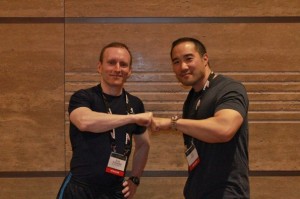
Any benefit to consuming one type of protein over another (i.e. whey vs. casein)?
In the larger picture, the answer for the most part is no. Assuming that someone is consuming sufficient total daily protein from a variety of high-quality sources, then their bases will be covered, regardless of differences in protein type. Short-term data indicates the superior effects of whey (compared to casein or soy) on MPS at both the resting & postexercise periods. It’s been speculated that this is due to the greater overall rise in circulating amino acid (particularly leucine) levels yielded by whey. However, studies that dragged this type of comparison out for several weeks have shown equivocal outcomes. Whey, as opposed to casein or soy, has not emerged as the dominant winner for improving muscular adaptations to training. This serves to reinforce the principles that a) total daily amount of high-quality protein is of prime importance, b) differences seen shortly postexercise will not automatically translate to long-term adaptations, and c) the body of evidence is subject to evolve.
How important is macronutrient ratio with respect to weight loss?
People have varying total energy demands, and this can differently influence their macronutrient requirements. Ratios per se shouldn’t be the focus since they’re merely a default result of figuring absolute needs. For example, those with a moderate to high energy output (through formal training, non-exercise activity, or both), can typically consume a higher amount of carbohydrate and still lose weight. In contrast, sedentary or barely active folks have lower overall energy demands, thus a high carbohydrate intake wouldn’t likely be optimal. Nevertheless, there’s rather interesting, yet unreplicated research examining the effects of insulin sensitivity on weight loss (low-carb worked better for insulin-resistant subjects while high-carb worked better for insulin-sensitive subjects). Unfortunately, body composition wasn’t assessed, nor was there any structured exercise protocol. My hunch is that a well-designed, progressive training program would greatly diminish the influence of pre-existent differences in insulin sensitivity on weight loss.
Are you a proponent of cutting carbs for someone who wants to get really lean?
For losing fat past the initial stages, I’m a proponent of imposing a calorie deficit, and depending on the individual situation, this can involve a decrease in caloric intake, an increase in caloric output, or a combination of both. In the case of intake reduction, it doesn’t make sense to hack into critical nutrients – especially protein, whose requirement actually increases in a caloric deficit. So, for the most part, it’s carbs that will get the brunt of the reduction when it’s time to cut calories, while protein & fat remain somewhat stable (I typically set protein slightly higher than it needs to be). The degree of carb reduction varies individually, but the underlying aim is to consume the highest amount of carbs that still allow a satisfactory rate of fat loss. This approach accomplishes two main things – it enables the highest possible training performance (in terms of both strength & endurance), and also the lowest chance of undue hormonal downregulation from prolonged bouts of dieting. Carb reduction can then be strategically positioned as a trump card. In other words, carbs can always be incrementally reduced on an as-needed basis, depending on how results are proceeding. Starting off with minimal carbs from the get-go leaves fewer options in the toolbox to break through progress plateaus once training volume is maxed-out.
Intermittent fasting has gained popularity recently. What are your thoughts? Panacea or fad?
I think the popularity of intermittent fasting (IF) is, for the most part, a good vindication of science. Academics have known for a while now that research has not supported the lore of frequent, small meals to stoke the metabolism better than the equivalent in larger, fewer meals. Furthermore, research has not supported the idea that small, frequent meals are necessary for preserving muscle mass. The evidence as a whole has not indicated any threat to muscle preservation during dieting when meal frequency is reduced – either daily or intermittently through the week. In fact, some studies have shown superior lean mass retention with IF during hypocaloric conditions. However, this could have been due to measurement error inherent with bioelectrical impedance analysis. It should also be noted that the IF research thus far has not involved structured exercise protocols.
At the same time that IF has vindicated science, it also created its own over-zealous following who preaches its universal necessity for optimizing body composition and health. Viewed more objectively, IF presents an effective option for those who prefer the convenience and luxury of larger meals – not to mention, less preparation & transportation of meals through the day. Any special or superior metabolic effects of IF compared to conventional meal patterns are speculative at this point. While IF has consistently shined in the department of lean mass retention while dieting, its comparison to conventional meal frequency on gains in muscular strength & hypertrophy is uncharted ground, at least in formal research. There are plenty of hypotheses flying around this area, but nothing demonstrated under controlled conditions. For the time being, meal frequency for optimal size & strength gain remains mysterious. This mystery is likely to begin unfolding with short-term data that one camp will excitedly embrace. If history means anything, the acute data will be followed by long-term data that shakes the confidence in former beliefs. Either way it goes, I’ve got my popcorn ready.
On a final note, I’ve seen the greatest client success come from letting individual preference dictate meal frequency. Some people do great on small frequent meals, others do great on the opposite (and all points in between). The theoretical advantages of any given dietary approach go straight out the window if it’s at odds with someone’s personal preference & adherence capability.
Tell us a little about your research review and how you came to start the service.
In a nutshell, my research review (AARR) is a monthly romp through the current and past research on nutrition, training, and supplementation. I do my best to present both the theory and application of the concepts and findings. The idea to start AARR was born from my own dissatisfaction with my knowledge level despite having vast client experience, multiple training certifications, a graduate degree in nutrition, and being active in attending & presenting continuing education lectures. I felt like there had to be some way to further “force” myself toward the top tier of expertise. Putting AARR together each month was the logical solution for my self-directed learning tendencies. I’m now enjoying the process of sharing my ongoing enlightenment with like-minded folks inside and outside of the field.
Great stuff, Alan. Really appreciate you taking the time to share your views!
Check out Alan’s blog Here
Check out Alan’s excellent research review (AARR) Here
March 6, 2012
Bret Contreras Interview
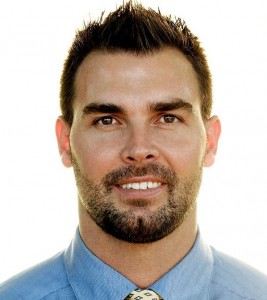
Today’s post is an interview I conducted with uber trainer Bret Contreras. If you’ve read this blog over the past couple of years, you’ll know that I hold Bret in highest regard; someone I’m proud to call a friend and colleague. Not only does Bret have a terrific grasp of the research, but he is able to harness this info and apply it in highly innovative ways that few can match. This is the essence of evidence-based practice and no one does it better. Pure and simple, he’s one of the preeminent fitness professionals in the world.
Bret has just come out with a terrific monthly research review that synthesizes the current research from a practical perspective. I ask him about this as well as a number of other fitness-related topics that I’m sure you’ll find of interest.
BJS: Tell us a little about your background in the fitness field.
I’ve been weight training and reading about fitness for 20 years now. Like most in the fitness industry, I started accumulating tons of workout partners in my teens. This gradually evolved into personal training on the side until finally moving to full time training and strength coaching. Eventually I opened up my own facility which I had for a couple of years and then I switched to full time writing and researching.
No matter how busy I am, I always make sure to keep a few personal training clients so I don’t become too theoretical and esoteric like some researchers. Training real clients and having discussions with fellow strength coaches, trainers, and therapists keeps me grounded and humble.
BJS: You’re often referred to as “The Glute Guy.” How did you come to get this nickname?
To make a long story short, I was talking to legendary strength coach Martin Rooney a few years back at a Perform Better seminar and was discussing my EMG findings on the glutes. He jokingly mentioned that I give myself a name and threw out “The Glute Guy” as a suggestion. I liked the sound of it and went forth with the nickname, and now it has stuck. I’m very comfortable being known as The Glute Guy as I believe that the gluteus maximus is the most important muscle in sports since it’s heavily involved in running, jumping, cutting, and twisting – all extremely powerful movements. In my opinion it’s also the most important muscle for increasing women’s sex appeal.
BJS: What is your training philosophy?
I could write an entire essay on this, but it depends on the client and the goal.
For sport training, I believe that 80% of the potential gains from strength training come from “general” big lifts such as squats, deadlifts, bench press, bent over rows, military presses, and farmer’s walks. I believe that the big lifts can and should be modified to be more joint-friendly or replaced by biomechanically-similar exercises for lifters who don’t tolerate the big lifts very well. For example, front squats, hex bar deadlifts, incline presses, inverted rows, and neutral grip dumbbell military presses are suitable alternatives which are generally safer but will yield nearly identical adaptations.
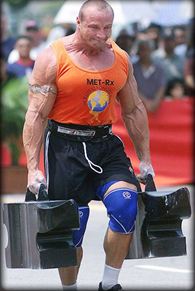
I believe that the remaining 20% of potential gains from strength training come from exercises which are chosen by analyzing the specificity of the sport and position. The most underutilized principle of specificity is the direction of the forces in sport. Force vectors need to be mimicked in strength training to maximize the transfer of training. There are typical strength exercises that help bridge the gap between weight training and sport, such as hip thrusts, back extensions, Bulgarian split squats, cable hip flexion, cable woodchops, and JC band presses. Explosive lifts such as Olympic variations, jump squats, kettlebell swings, slideboard lateral slides, and medball throws; as well as towing exercises such as sled pushing bridge the gap as well. I believe that these special exercises put the finishing touches on a well-balanced general routine and significantly enhance the transfer of training.
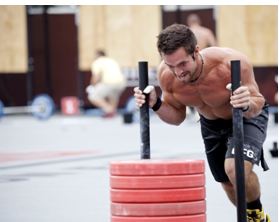
For hypertrophy training, I believe in getting people really strong in a variety of exercises in a variety of rep ranges from a variety of angles while incorporating a variety of methods. How’s that for being vague? I’ll elaborate.
Let’s say I was aiming to achieve maximal pectoral hypertrophy for an experienced male client. In this case I would seek progressive overload in barbell and dumbbell bench and incline press variations for low to medium reps. I would incorporate targeted movements such as flat and incline fly and crossover variations for medium to high reps. From time to time I’d throw in weighted dips and push-ups (assuming they were well-tolerated by the client) for medium reps. I’d rely on traditional methods such as straight sets and pyramiding, in addition to utilizing neural overloading techniques such as the rest-pause method and pumping techniques such as the constant tension method with short rest times in between sets.
BJS: Do you believe in periodizing programs?
Of course I do, but not in the same manner as most coaches. There’s an Olympic Weightlifting coach out of Las Vegas named John Broz who sticks to six exercises year in and year out. His athletes are far more explosive than 99% of those who train with other coaches. They get really good at squatting and front squatting, cleaning and snatching, and power cleaning and power snatching, and their routines don’t vary from week to week and year to year. There’s something to be said for sticking to the basics and keeping it simple for strength and power gains, and Broz clearly demonstrates that fancy periodization is not a requirement for impressive training results.
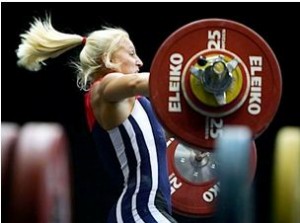
However, it’s of utmost importance to keep clients and athletes injury-free. For this reason, I wouldn’t feel comfortable sticking with Broz’s approach, though I recognize its efficacy in terms of performance gains.
Currently I don’t train many clients but I’ll discuss some things that have worked well for me in the past as well as over the past year with some of the clients I’ve trained. First, I periodize according to skill level. I’ve learned much from Gray Cook over the years and think it’s imperative to focus on developing sound fundamental movement patterns which requires ideal levels of mobility, stability, and motor control. All clients and athletes need good squatting, hinging, and bridging patterns, as well as single leg and lumbopelvic stability. Corrective exercises should be utilized up front where necessary to fast-forward progress.
Once good technical form is reached on the big lifts, correctives are placed on the back-burner by moving them into the general warm-up, and the primary focus shifts to progressive overload. Getting stronger at the big lifts through a full range of motion without compromising perfect technical form is the name of the game. Once sufficient strength is reached following many years of strength training, main exercises should be rotated frequently and explosive repetitions via the dynamic effort method become more important.
Second, I sometimes periodize by targeting the weakest range of motion along the strength curve. For example, lifters who seem to fail down low and display disproportionately low flexed-range hip extension strength would be prescribed full squats, deficit reverse lunges, good mornings, and deficit deadlifts, which are all very hard in a deep position of hip flexion. Conversely, lifters who seem to fail at lockout and display disproportionately low end-range hip extension strength would be prescribed high box squats, rack pulls, back extensions, and hip thrusts, which target mid or end-range hip extension strength. I usually prefer to blend these movements together during programming but I’ve achieved great results with several clients by using this methodology. In fact several months ago I put 35 kgs (around 77 lbs) on a guy’s deadlift with this approach in just four weeks.
Third, from time to time I periodize by alternating clients between higher frequency approaches, higher volume approaches, and higher intensity approaches. Though this is a very common approach to periodization, I do it differently than many coaches as I switch things up more drastically than just tinkering with sets and reps – I’ll vary the exercises, manner of execution, and special methods as well. For example, during the high frequency phase I’d keep things simple and stick to the basics. During the high volume phase I’d employ bodybuilding techniques such as drop sets. And during the high intensity phase I’d employ HIT techniques such as breathing squats.
Fourth, I periodize by choosing new goals each month for my clients based on their input. One month we might try to set a record on maximal deadlifts. Let’s say a male client can deadlift 365 lbs, I may design the program around trying to get him to reach 405 lbs by the end of the month. Perhaps the individual wants to lose 5 lbs of fat for the month; I might add in 10-15 minutes of HIIT or MRT at the end of the session.
Fifth, I often periodize by utilizing an undulating (non-linear) approach, for example during a high frequency phase I might go with heavy weight for low reps on Monday, light weight for high reps on Tuesday, moderate weight for explosive reps on Thursday, and moderate weight for medium reps on Friday.
So there are a few ways in which I periodize programs. One approach to periodization that I don’t like is the classic (linear) approach that has you tapering down on rep ranges over time. I don’t like this method as individuals seem to get really good at whatever rep range they’re training at the expense of losing strength in the other rep ranges. For this reason I believe that every week should include some heavy low rep work, moderate medium rep work, and light high rep work for maximal efficacy. I do have some colleagues who have achieved good results using this approach so I recognize that it seems to work well for certain folks.
I should also mention that I am a big fan of programming according to instinct/gut feeling, though I don’t feel that this is a true form of periodization. Whether you call it auto-regulation, Cybernetic periodization, instinctive training, or biofeedback training, it’s all similar. You have a clear agenda and specific goal in mind for when your client enters the weight-room, but you tinker with the program on the fly based on verbal and non-verbal feedback from the client. I believe that all good programs rely heavily upon auto-regulation as it’s impossible to predict the precise psychological and physiological disposition of the client on a regular basis as there are just too many factors at play.
BJS: I know you’ve worked a lot with EMG. Do you consider it a useful instrument for studying biomechanics?
Hell yeah I do! Anyone who says otherwise hasn’t worked with EMG and doesn’t regularly read research. Strength & Conditioning writers are great at coming up with new ideas and new theories – in fact they’re the best. Sometimes these theories end up being right, but often the theories are either incorrect or incomplete. Researchers and sports scientists use various tools to learn more about the neuromuscular system and test hypotheses, and EMG is just one of these tools.
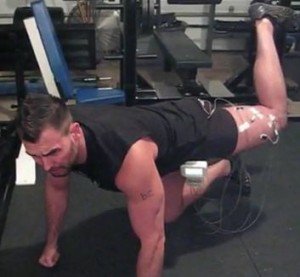
EMG is great because it measures the electrical activity in muscles; a measurement of the nervous system’s intent to fire the muscles. This gives us a reasonable measurement of muscle force (especially during isometric contractions and when non-fatigued) which is related to mechanical tension and ultimately, hypertrophy.
Like any tool, EMG has some shortcomings, but many of the shortcomings can be ameliorated, for example you can use multiple channels of EMG (i.e. using multiple electrodes on a particular muscle) during testing to cover more surface area and test more regions of the muscle. I like that EMG can be lined up with motion capture to analyze EMG timing relative to motion. EMG can be incorporated into muscle modeling along with force plate data and inverse dynamics to help predict joint torques, spinal loading, and muscle forces. Spinal biomechanist Stu McGill utilizes this approach in his experiments.
I learned so much valuable information when I conducted my extensive EMG experiments. I’d hook up 4 electrodes to various regions of muscles and perform tons of different exercises to see which movements activated the various muscles and regions of muscles best. Many times the experiments validated what I already knew through practical experience, but a few times I was very surprised at the results. However, after pondering the results and analyzing the biomechanics of the movements, the EMG findings made perfect sense.
My favorite aspect about EMG is that it’s the only tool that I know of that gives us numerical data to give us some idea as to muscle force. MRI and ultrasound are nice but they don’t provide numbers. Until we have a more practical way to measure actual muscle force, to me standardizing EMG to MVC is the way to go.
Many of my researcher colleagues and strength coach colleagues are quick to dismiss EMG because of various reasons and I always listen to their rationale. But usually I think their rationale is overly-critical and unfair. There are indeed limitations, but it’s the best tool we’ve currently got for seeing which exercises work a particular muscle or muscle part the best. Sure we can utilize other methods, such as MRI (there’s even a newer MRI technique called “STIR” which examines muscle damage following a workout), ultrasound, biomechanical analysis, “feeling the burn” during exercise, palpation, and simply doing a bunch of sets and seeing where you’re sore the next day, but EMG gives us actual numbers to use for comparison.
Bodybuilders have long claimed that you can perform specific movements to target a particular area of a muscle. Sports scientists were skeptical, but EMG has provided much evidence for their claims. Bodybuilders were right about the delts, traps, pecs, lats, abs, glutes, quads, hams, and calves; muscles don’t get worked uniformly across the various fibers and specific exercises can be used to strengthen or hypertrophy a particular region. This is useful for functional purposes and sport, for bodybuilding purposes, and for rehabilitation purposes. We’re now learning that the nervous system is skilled at determining which parts of the muscles have the best leverage at a particular range of motion and it fires those regions when appropriate to produce efficient movement – this has been coined “functional differentiation.”
Just recently EMG was used to dispel the “corset hypothesis” that most physical therapists and strength coaches subscribe to; we learned that the transverse abdominis doesn’t contract uniformly during unilateral limb movement. There are many excellent uses for EMG and when used by a skilled practitioner who understands its strength and limitations, it’s incredibly valuable.
BJS: You have a new product out that I know you’re quite excited about. Tell us about it.
I sure do. It’s a research review service that I started with my colleague Chris Beardsley – someone who I respect immensely. Beginner coaches and lifters need to spend time in the trenches gaining experience under the bar and working with other people. They don’t have time to sift through the research, and even if they did have the time, chances are they don’t have access to the journals.
Yet every young and advanced athlete, lifter, trainer, therapist, and coach could benefit considerably by receiving a monthly report that summarizes the latest findings in strength & conditioning, biomechanics, physiology, and physical therapy. This is exactly what Chris and I will do each month; we’ll pick out the 40-50 best articles for the month with a good blend from each category and summarize and email them to you in a nice PDF format.

Think about it – the President of the United States has advisers that hand him reports so he can stay informed. I’d like for you to feel like the President each month, so let Chris and me do the hard work for you so you can stay abreast of the literature and have an edge on your competition without taking up too much of your precious time.
For just $10/month you can be in the know by subscribing at www.StrengthandConditioningResearch.com. I can’t begin to tell you how much more intelligent and informed I am as a coach following a year of intensive studying and researching. It is my hope that strength & conditioning enthusiasts will take my word for it and subscribe as I can’t imagine anyone regretting it – so far all the feedback I’ve received has been very positive. Thanks for the interview Brad – I appreciate the opportunity!
Check out Bret’s blog at: Bretcontreras.com
Check out Bret’s review publication at: StrengthandConditioningResearch.com
August 2, 2011
Do We Need to Directly Train the Core Muscles?
In a recent post, I mentioned that I attended John Cissik’s thought-provoking presentation on core training at the 2011 NSCA National Conference. In short, John reviewed the peer-reviewed literature on the effects of core training on athletic performance, injury, and pain. His conclusion: contrary to popular belief, there is not much evidence that core training significantly improves any of these variables.

John was nice enough to consent to interview for Workout911.com readers to expand on his views on core training. Whether you ultimately agree with his conclusions or not, it should at least highlight the need for more research on the subject.
BJS: Thanks for consenting to this interview. Tell us a little about your background.
Thanks for the opportunity! Like a lot of people in our field, I wear many hats. I work as the Director of Fitness and Recreation at Texas Woman’s University. I also spend a great deal of time working with track and field programs on their strength and conditioning. I have worked as a strength and conditioning coach at several levels, worked as a personal trainer, have experience in rehab, and have even taught at a university. I have a master’s in exercise physiology, an MBA with an accounting focus, and certifications from the NSCA, USA Track and Field, and the old US Weightlifting Federation. I’ve written a number of books and articles on strength and speed training, done many presentations on these subjects, and even done four videos. I also serve as an associate editor for Strength and Conditioning Journal.
BJS: You challenge the commonly held belief that direct core training improves athletic performance. What led you to this conclusion?
I was asked to review an article on testing core stability. The article had several “field” tests along with norms, which is fine. What interested me was a statement that the article made which was essentially that everyone needs to have their core stability assessed prior to being allowed to engage in movement because movement is so inherently dangerous. At the time I felt that things have gotten a little silly with regards to core training and I thought it was time to actually seek our and review the literature on this topic.
One of the key claims regarding the efficacy of core training is that it improves athletic performance. If you wanted to demonstrate this through research, you’d have a group of subjects engage in core training and compare them to a group that doe not. Then see which group improves the best on athletic performance measures. Surprisingly, with all the claims associated with core training, this kind if research is really difficult to find.
There is a lot of research that shows that core training improves core strength and endurance. There is a lot of research to show what exercises are best at recruiting specific muscles. When it comes to athletic performance, the research is at best conflicting at and worst it shows that core training is not effective.
Research that looks at core training and its ability to improve performance does not establish that it is a magic bullet. Now, some research establishes a relationship between some measures of athletic performance and core endurance, but it is unclear if one causes the other. For example, does better core endurance create a stronger squat or does the stronger squat create better core endurance?
BJS: Many fitness pros claim that core training helps to prevent injuries, particularly those to the lower back. This is predicated on the belief that strengthening the muscles supporting the spine makes this region less susceptible to injury. What’s your take on this?
Currently, there is not a very good understanding on what causes lower back injuries. The medical literature classifies lower back injuries to two types; specific and non-specific. Basically specific are the result of an incident and can be seen through imaging. This represents about 10% of lower back pain. The other 90% are non-specific which means that there is not an established “incident” which caused it and it cannot be seen via imaging. There is no consensus in the literature about what causes either kind of injury. As a result, it’s impossible to say that exercises addresses any of the things that causes these injuries. Research that looks at exercise “preventing” low back injuries is inconclusive.
BJS: What is your opinion on performing core exercises as a treatment for those with lower back pain.
Exercise seems to be effective at reducing pain and improving quality of life for people with chronic (grater than 12 weeks) low back pain. It seems to be ineffective for people suffering low back pain for fewer than 12 weeks. The important thing to note here is that any kind of exercise seems to be effective; stretching, aerobic exercise, general strength training, and core training. There does not seem to be a best kind of exercise for chronic low back pain.
BJS: You have discussed the differences between specific lower back pain and non-specific lower back pain. Some fitness pros claim that there is no such thing as “non-specific lower back pain.” How do you respond?
Those are not my terms. Those terms come from the Journal of Strength and Conditioning Research, Medicine and Science in Sports and Exercise, Spine, the European Spine Journal, the British Medical Journal, and JAMA. I understand it’s fashionable to bash medicine, but I’d rather take a sick or injured family member to a medical doctor as opposed to a fitness pro that thinks that they know more.
BJS: Given the evidence, do you think there is any value in training the core with specific exercises or does the core get sufficient work from performing multi-joint exercises so that direct core training is unnecessary?
At the end of the day, anything that gets someone into the gym is a good thing. If it’s core training, Cross Fit, yoga, Zumba, Olympic lifting, whatever it takes to get someone in the gym. I think core training is great from that standpoint, it’s great for vanity, but it is not a magic bullet. Many free weight exercises (squats, deadlifts, and cleans) activate the core muscles just as well as core exercises. So when I only have a limited amount of time to work with athletes, I include some core work to address vanity issues but my focus is on multi-joint exercises.
BJS: Any closing thoughts about core training?
Core training is a victim of poor science, marketing hype, and stretching research to say something that it doesn’t. Many of the claims are unsubstantiated or simply wishful thinking. When it comes to working with athletes, we’re always looking for some type of magic bullet but these do not exist and they do not replace hard work and structured programming.
Follow John on Twitter at: John Cissik on Twitter
Cheick out John’s blog at: JCissik’s Blog
April 19, 2011
Interview with Research Expert Mark Young
Mark Young is a up and coming fitness pro who is noted for his researched-based approach to fitness. I’ve known Mark Young for some time now, and have enjoyed discussing and debating the application of current research on a variety of fitness topics. Mark has recently released a new audio series that deals with how to read fitness research. It’s a great product, and I wanted to give him the opportunity to share his knowledge about some of the issues involved in interpreting and extrapolating the results of peer-reviewed studies to everyday life. I think you’ll find it an interesting read.
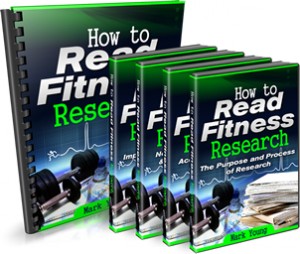
BJS: Thanks for consenting to this interview, Mark. Let’s begin by having you tell us a little about your background.
Mark Young:: Basically I am just a strength coach with a fascination (read: obsession) with research. I’ve spent the last 11 years training people to look great naked and my my writing has been featured on T-Nation.com, StrengthCoach.com, WannaBeBig.com, and in magazines like Muscle & Fitness, and Experience Life. I’ve also had the opportunity to do some research myself in one of the leading muscle protein metabolism labs in the world and hope to be defending my Masters in the fall.
BJS: You’ve recently come out with a new product called, “How to Read Fitness Research.” What motivated you to create this product?
Mark Young:: To be totally honest, I’ve been thinking about creating this product for a long time but a lot of my good friends have discouraged me from doing because they feel that it won’t be a big seller (it isn’t as sexy as losing 20 pounds of fat in 46 seconds) and it might offend some other big names in the fitness world (the ones selling the aforementioned products) as it will shine a great big spotlight on the BS that they’re selling.
Of course, I’ve never been one for sticking to the rules and, quite frankly, I really don’t care whether I make a great deal of money off of this product or not. As a result I decided to finally pull this product together to give fitness professionals and serious exercise enthusiasts the power to cut through the marketing hype and widespread misinformation to create the very best fat loss, muscle gain, and sports performance programs for themselves.
BJS: You mention that there is a lot of misinformation out there about fitness. Can you give some examples?
Mark Young:: I could probably go on about this all day, but I think one of the best examples is the widespread use of the Tabata protocol for fat loss. While they are certainly challenging, the studies from which these workouts were derived were not intended to measure fat loss at all! In fact, there is no evidence to date that the Tabata protocol is any better than any other exercise program for fat loss.
And up until recently, there was a very popular theory that eating more frequently was associated with a higher metabolic rate and that not eating would force the body to go into “starvation mode” which we now know is totally bogus.
There are probably hundreds of examples I could give, but the point is that they are EVERYWHERE and it is easy to get swept away in the excitement and follow the herd if you’re not careful.
BJS: Why shouldn’t a person simply rely on their favorite fitness expert for interpreting research on exercise and nutrition?
Mark Young:: Honestly, I’m all for listening to what other bright minds have to say. I even subscribe to a couple research review services myself. However, I think it is important to know that when you listen to someone else’s interpretation it is subject to their biases, experiences, and understanding of that particular area of research.
I often chat with others and later review the research for myself only to come up with a totally different conclusion (based on my own biases, of course). This process breeds more discussion and ultimately I’m more able to create better fat loss, muscle gain, and performance programs because of it.
BJS: Why can’t a person just read an abstract of a research paper and get the main points?
Mark Young:: Great question! The abstract is basically a summary of a whole paper and the results of the study. Or more correctly, the abstract is a summary of the paper and the author’s interpretation of the results of the study. As a result, you have no idea what methods the author used to complete the study and whether the results actually say what the author believes they do.
For example, an author could put people on two different diets and say in the abstract that the fat loss associated with one diet is greater than the other. If you didn’t read the methods within the paper you might have missed that the author only recorded changes in body weight to measure the effectiveness of the two diets. In this case, making a leap from weight loss to fat loss isn’t warranted as there was no way in the study to determine if the weight actually lost was muscle or fat. If you only read the abstract, you wouldn’t know any of this.
BJS: Why does it matter if a study is funded by a particular company?
Mark Young:: I have to admit that the lab that I had experience with did a really good job at dissociating itself from any funding agencies. However, when studies are funded by supplement companies, you have to watch for potential bias of the researchers as companies can sometimes lean on them to publish positive results. Of course, I’m not saying that this is always the case, but you certainly have to keep your eyes out for this. Authors have to declare their sources of funding at the end of the paper (which is yet another reason to read the whole thing).
I recently read a meta-analysis (a study of studies so to speak) of the research on glucosamine and it turned out that the bulk of the studies showing a positive effect on joint pain were those funded by companies selling a glucosamine product. Those not funded by a glucosamine selling company were less likely to show the product was useful.
So again…you have to have your eyes open. I think a lot of people are using glucosamine that might not otherwise be if these results were well known.
BJS: Does it make a difference what journal a study is published in?
Mark Young:: Well…If you see a study published in the Journal of Hyooge Musclez then you can pretty much disregard anything written there.
Journals are very different in their criteria for acceptance and the best articles will only make it into the most stringent journals. Journals like Nature and Science are probably two of the hardest to get a publication in. Some people use something called Impact Factor to determine the value of a journal which is something I don’t do, but you have to know the good from the bad.
In my product I’ve included a list of over 20 journals worth looking at. Just sayin’.
BJS: You have a couple of bonuses included with the product. Can you tell us a little about what they are?
Mark Young:: One of the bonuses is an interview with my Masters thesis advisor Dr. Stuart Phillips who talks extensively about anabolic signalling, protein synthesis, and hypertrophy. If you’re into understanding how research on muscle growth is done, you can’t do much better than interviewing someone from one of the best labs in the world for doing exactly that. I’ve done a ton of interviews in my day…and I think this is one of the best.
Another bonus I’ve included is a short video tour through the online research search tool called PubMed. I talk extensively about how to use search keywords, limits, and different properties of the site to find exactly what you want when it comes to training and nutrition research.
And finally, since podcasts are very popular these days (and because a lot of people love to listen while driving) I’ve included the MP3s of all of the seminars in the product so people can listen on the go.
BJS: Any final thoughts, Mark?
Mark Young:: Ultimately, I guess the take home point of this whole interview is that you can either put your faith in someone else’s opinion or form your own. With all of the misinformation out there (and personal biases of those reading the good information) I think that the best way to have power over your situation is to read the information yourself.
Thanks a ton for doing the interview Brad! I really appreciate it!
You can check out more about Mark at :Mark Young Training Systems
You can read more about Mark’s product at: How to Read Fitness Research
April 5, 2011
Interview with Fitness Pro Nick Tumminello
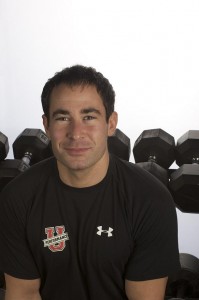
Nick Tumminello is one of the most respected fitness professionals in the industry – and for good reason. In addition to owning a successful training company (a facility he calls “Performance University”), Nick also is a noted fitness blogger and author, and a coveted professional speaker. I’ve had the opportunity to speak with Nick at length and found him to be an extremely knowledgeable and astute pro, someone who shuns fads and hype in favor of sound training principles. In short, he gets it. As such, I’m happy to provide him with a forum to share some of his opinions and thoughts on exercise training. As I’m sure you’ll see, he’s very passionate about what he does and isn’t afraid to express his views – a combination that always makes for an interesting read.
BJS: First, I’d like to thank you for consenting to this interview. Let’s start by having you tell us a little about your background as a fitness professional.
Nick: Sure. Here are some of my professional career highlights:
• Current presenter for IDEA.
• Past presenter for AFPA and ECA
• Taught workshops at international fitness conferences in Canada, China and Iceland
• A regular contributor to several major magazines such as Men’s Fitness, Men’s Health and Women’s Health, Maximum Fitness, Muscle Mag, FIGHT, Train Hard – Fight Easy and Oxygen magazine.
• Contributing author to two New York Times best selling books – The Men’s Health Big Book of Exercises and The Women’s Health Big Book of Exercises.
• Referenced twice in the ACE Personal Trainer Manual, Forth Edition
• Produced 10 instructional DVDs
• Produced 5 Live DVD, CEC courses through Healthy Learning videos
• “Best of the best” trainer by Men’s health.
• Men’s health expert blogger
• Inventor of the Core Bar
• Hybrid Fitness expert coach for Team Jaco clothing
• Featured on the front page of Yahoo.com and YouTube.com
• I write a popular fitness training blog (directed toward fitness professionals) at Nicktumminello.com
BJS: How would you characterize your training philosophy?
Nick: At Performance U our philosophy is simple – Get results by using any means necessary! We use a hybrid style of training, which incorporates everything under the sun from bodybuilding to yoga to powerlifting to kettlebells to body weight training, etc: I have zero emotional attachment or personal bias toward any specific training style or system. Instead, I’m emotionally attached to getting my clients the result their after and keeping them having fun in the process!
BJS: In your view, what are some of the biggest mistakes trainers make when developing programs for their clients?
Nick: Several come to mind:
– Not using valuable training time as wisely as possible! My clients almost never stop moving during a workout. But, that doesn’t mean that everyone is doing “circuit training”. We give a primary (big rock) strength exercise. Then, during the rest period between sets of that strength exercise, we’ll throw in stuff like mobility drills, balance drills, rehab drill (if recommended by a PT), sports specific actions (like shadow boxing for a boxer), diverting exercise (lighter loaded movements using the opposing muscle involved in the primary strength exercise.
Here’s a great article I wrote about active recovery, Performance U style! – Big Gains with Active Recovery.
– Over use of unstable surfaces.There are certainly motor control benefits to using unstable base training. And there are benefits to ankle and knee rehab for using unstable base training. But, beyond that, standing on an unstable surface limits your ability to produce force and therefore overload your muscle enough to make any sort of gains in strength both physiologically (add muscle mass) and neurologically (increase motor unit recruitment and power).
Plus, there could be some serious dangers to using weight while on a stability ball. I covered these topics and the research in this blog post – Swiss Ball Training
At Performance U, we like to use unstable base training to overload the upper-body since the upper-body primarily functions in an open chain. So, we use moves like Swiss ball push-ups and various Swiss ball perturbation drills where the athlete tries to hold the ball still (prevent from moving) while we (the trainer) tap it in different directions. But, we rarely stand on an unstable base unless it’s part of a specific motor control re-training program that’s recommend by a PT.
– Not involving their client enough in the workout. We all like to be empowered. So, what we have found to be very valuable is to ask your client at the beginning of the workout “anything particular you’d like to do today?” You’ll certainly not throw off your entire game plan if you added in the one little thing that your client requested. Or, tell your client that the last 5 minutes of each session is up to them what they do. Now, that doesn’t mean sit and rest if they say so. But, if they say something like “let’s do some arm work,” then you pick what arm work they do. Not only will they love you for it, but involving your client in their workout shows you respect them, which is very empowering! Plus, those 5 minutes you give them are worth way more in the way it makes them feel then what you may feel that it takes away from your 60min game plan. They gave you 55min – You can certainly give them 5min – Especially if it make your client enjoy coming in more and feeling encouraged!
BJS: Do you implement periodization into your routines?
Nick: Yes! Put simply, periodization means “a plan”. That said, for athletes and physique athlete’s, we really emphasize a training plan that’s progressive and well documented. This plan also involves performance markers (PRs) quite often. But, for the average fitness client, we don’t emphasize this as much because this type of client usually doesn’t care about setting PRs and things like that. They just want to have fun, move their body and get a good seat! For some folks, we just keep them moving and give them a different workout each time. The whole “do programs, not workouts’ is great trainer talk. But, in the real world, some clients don’t want to “train using program”. Instead, they just want a fun workout that kicks their butt! Since personal trainers are in the customer service business, not the protocols business (like a strength coach or PT), we must deliver what the client asks for. Otherwise, we didn’t do our job! But, we must do it in such a way that we still have some sort of plan, we just don’t emphasize that to he client as much. Nor do we stay as strict with it as we would if it were an athlete.
Think about it like this: Trainers are like the custom car shop and Strength Coaches and PT’s are more like car mechanics. When you co into a car mechanic, you say “My car is not working right, please do whatever you need to do to fix it”. N other words, we don’t tell they mechanic what we want other than the desired outcome. But, when we go to the custom car shop, its very different. We tell them exactly what we want them to do to our car. We say “paint it bright red, put ground effects on it and a fancy front grill”. You better not return that car to the owner painted Blue with a spoiler and new bumper on it because you said “that’s what the car really needed”. I hope you understand my analogy.
BJS: What are your views on the claims by some fitness pros that spinal flexion exercises (i.e. crunches) are injurious to the spine and shouldn’t be used in core training?
Nick: I’ve read the research and I’ve heard the opinions extrapolated from specific individual’s personal interpretations of the research. My personal interpretations of the available information out there hasn’t convinced me to think that performing trunk flexion exercises (in good form) is dangerous, either in the short or long term. I’m not scared of a few mid-range trunk flexion exercises performed at normal doses, like any other exercise protocol. Doing 300+ crunches a day may be an issue. But, what movement wouldn’t be an issue if you did it 300+ per day, everyday?
At Performance U, we use dynamic trunk exercises to build trunk strength (i.e. controlled movement) along with static stability trunk exercises (to resist unwanted movement). That said, we don’t use crunches because I think it’s just too damn easy of an exercise. Almost anybody, even if you’ve never exercised before in your life, can usually bang out 50+ crunches before even getting remotely fatigued. So, the flexion exercises I choose to use are more difficult exercises. Therefore they’re performed at lower volumes as you would use to strengthen any other muscle group / movement pattern. The flexion movements I’ll use (with specific clients) are Swiss ball plate crunches, straight leg sit ups and Swiss ball pikes.
Speaking of Swiss Ball pikes – Here’s the toughest and coolest Fitness Ball Pike exercise variation you’ll ever try! The Single Best Abs Exercise. I’ve put lots of time into looking at the research on lumbar flexion and believe me, if I thought there was some concrete, conclusive evidence that it was “bad”, I’d cut it out yesterday! But, the only thing the research “proves” is that we still really don’t know a damn thing about back pain/degeneration. Everything else you hear out there on flexion is purely opinion. And, we all know what they say about opinions…
Most of our training at Performance U is geared toward reversing the sitting position. So, we don’t put a huge emphasis on trunk flexion movements. But, we still use them when and where we feel the client/athlete will benefit from it.
One major thing I’ve learned in that with the human body, there are no absolutes. There’s no black and white, just lots of grey area. With that tid-bit of common sense in mind, it’s important that we avoid speaking in absolutes when discussing exercise. I feel our industry will have much less confusion and much more camaraderie, when we get away from using cookie-cutter statements and over-generalizations.
It hit me the other day that “No flexion” is the new “TvA Draw in”! The current state of the fitness industry on trunk flexion exercises strangely reminds me of the industry’s TVA craze. Up until about 3yrs ago – if you weren’t “drawing in”, you were killing your back because you were leaving it “unstable” and without deep core muscle activation. We felt the TVA was magic solution to saving folks from back pain. We’ve now learned how off base we were and how much we overreacted and misinterpreted the TvA research. It will be interesting to see what we are saying about trunk flexion in 5 or 10yrs from now.
BJS: Are there any exercises you feel are better than others to optimize core development?
Nick: Any standing exercise, which forces you to use your torso to transfer force vertically, horizontally or diagonally from head to toe or vice versa! I’m a big fan of heavy loaded, unilateral exercises, where your torso has to work over-time in order to maintain optimal position while dealing with the off-set load.
At Performance U, we train the body from the center out. In other words, we prioritize standing exercises over seated or lying exercises. This way, we always make sure our torso can control the forces that our extremities can create.
BJS: The term “functional fitness” has become a real buzzword in the industry. What’s your view on the application of functional training?
Nick: Anything that helps you achieve your desired goal is functional in my book. There are really two ways to look at what’s “functional”:
One way is to look at the level of CNS demand. The higher the CNS demand, the more “functional” you could say the exercise is. An example of this would be a single leg squat, which is much more demanding on your CNS than a seated leg extension.
The other way to look at what’s “functional” is to compare how much carryover or how similar a specific exercise is to the given activity in which you’re training for. For example: A seated leg extension may be very functional for anyone looking to increase muscle size (hypertrophy) in thier quad muscles. But that same leg extension may not be considered highly functional for a rock climber. Here’s an interesting post I wrote called What Is Functional Training?
Here at Performance U, we use high CNS demand moves and lower CNS demand moves to ensure our clients software (CNS) is as up to date a possible. We also use exercises that look a lot like the activity we’re training for (this increases motor learning, bio-motor carryover), along with other exercises that don’t look anything like the given activity. This way we also ensure our clients hardware (their muscles) can do anything they ask of them through generalize strength work. Basically, all kinds of training have been shown to have benefits. So, we simply do it all!
BJS: Tell us a little about your new DVD called MAPS.
Nick: I can say with confidence that the MAPS DVD represents the most effective, cutting-edge training system ever designed for achieving increased joint mobility, pain-free movement and improved functional performance.
BJS: I assume MAPS is an acronym?
Nick: Yes. MAPS stands for Mobility Activation Paired Sets, and it was developed to increase the effectiveness of our mobility and muscle activation drills. Traditionally, coaches place mobility and muscle activation in two separate sections of their programs; but hundreds of clients and thousands of hours of practical experience have taught me that mobility and activation drills are both more effective when paired together as supersets.
BJS: What do you feel makes MAPS so effective?
Nick:After performing a mobility drill, its crucial to activate immediately after mobility work. Why? – because after doing mobility training, you’ll have gained new range of motion (DUH!) The problem is that you still haven’t taught your body how to control that new range; your central nervous system (CNS) hasn’t developed the motor control needed to keep that mobility and safely use it during functional movement. This is where the activation drill comes in: Performing muscle activation within the newly acquired range of motion allows you to build that necessary motor control and keep that new range, and your CNS can then “functionalize” your new-found mobility into active movement patterns.
BJS: Any final words?
Nick: If you’re a trainer/coach and you took the time out of your day to read this entire interview – You’re obviously passionate about your education and about being the best fitness professional you can be. Your clients are lucky to have you!
For more about Nick and his MAPS program check out Nicktumminello.com
February 10, 2011
An Interview with Celebrity Trainer Joe Dowdell
Joe Dowdell is a rarity in the fitness field. He’s owner of an elite gym, a fitness author, and a contributor to numerous magazines and websites. Certainly impressive credentials. But what sets Joe apart from the vast majority of trainers out there is that he’s a student of exercise science who takes an evidence-based approach to training. The results of his efforts more than attest to this fact — just check out the myriad testimonials from those who have trained with him, including many celebrities and athletes. Bottom line: the guy knows his stuff!
I was fortunate to have the opportunity to interview Joe about his training philosophy and various other aspects of his career. I’m sure you’ll find his views of interest.
BJS: Tell us a little about your gym, Peak Performance. What makes it unique?
JD: First of all, thank you for wanting to interview me for your Blog. Originally, I started Peak Performance in a 2,000 square foot training loft in Gramercy Park back in 1997. After about 3 and ½ years, my business started to outgrow the size of that location so I began to look for a bigger space. During those years at the Gramercy location, my knowledge base as both a trainer and a business owner grew as well so I wanted a space that would accommodate both.
So in 2002, I decided to relocate my business into my dream space. I had found a beautiful (although pretty much raw), sun drenched, 10,000 square foot loft in the Chelsea-Flat Iron area. It was a big move—and definitely a risky one—for me at the time because my actual business wasn’t really large enough to sustain a space that size. But, I loved the space and I felt that it would give me the ability to equip it with the all the necessary tools so that we could accommodate any type of client from the general public to an elite athlete.
In the beginning, like most business, I experienced growing pains, and lots of stress, but I just kept plugging away. And now, with the support of an amazing management team and staff, I have something that I’m really proud of. Peak is like a trainer’s paradise. We have just about every training tool that you can imagine, ranging from Kettlebells, sandbags, dragging sleds and Prowlers to Keiser Power Racks, AT/VO2 Testing equipment and a Woodway Force Treadmill.
BJS: How do you do to keep up with continuing education?
JD: : I love to learn. My Dad instilled in me at an early age that no one can ever take your education away from you. So, once I decided to get involved in the fitness industry, I made it a point to learn as much information about exercise science as I could, from as many people and resources as I could. I’ve traveled all over the place to learn and I still do to this day. In fact, I already have numerous seminars that I will be attending on my 2011 calendar.
This year is going to be a bit different for me in that I’ve also decided that I’m going to start teaching myself. I’ve developed a Program Design Seminar and I’m currently putting the finishing touches on an Energy System Training seminar. In addition to these two seminars, I’m almost finished compiling an entire educational manual for my training staff that is broken down into about 14 different modules, ranging from client intake and assessment to recovery and regeneration. I’ve pulled information from everywhere in order to put this manual together and it will be a mixture of theory and practical application of the various topics. I’m also toying with the idea of turning this entire project into a mini-mentorship program to be held at Peak for small groups of trainers.
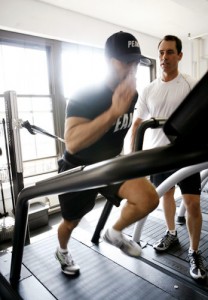
BJS: One of your areas of expertise is program design. What do feel is the most important component of program design?
JD: I love designing training programs especially if it’s for an elite level athlete. When designing programs for athletes, I have to manipulate so many factors that it’s very mentally stimulating for me as a coach. The single biggest factor in designing a successful training program is defining what the primary goal of the client or athlete is. Once you know that, you can start to look at all of the other factors such as how much time do we have; what’s their current starting point; what limitations do we have to factor in (i.e., past injuries, current injuries, time restraints, etc.): what other kinds of training are they going to be doing; how many days a week are they willing to commit to training; how’s their nutritional habits; how’s their stress levels; how’s their sleep; etc. If you don’t consider all of these things in designing a training program for your client or athlete, than you are not doing your job as effectively as you can and in essence you are designing training program with a blindfold on.
BJS: Couldn’t agree more. Following up on this topic, what would you say is the biggest mistake that trainers make when designing routines for clients?
JD: There are several mistakes that many trainers make in designing training routines:
• The first mistake is they don’t progress their clients properly. If a client can’t perform an exercise, than you need to regress the movement pattern to something that they can perform successfully. On the other hand, if something is too easy, than you need to make it more challenging. But, you should only micro-progress them to the point where it elicits a favorable training response (i.e., positive adaptation) without over-stressing them.
• The second mistake is that they don’t vary their client’s training programs strategically. It makes no sense to vary your clients training programs just for the sake of creating variety. Make sure that there is a thought process to your decisions.
• Another big mistake many trainers make is that they will often allow their clients to sacrifice the quality of movement for the quantity of movement. In particular, this happens a lot when trainers are conducting metabolic resistance training programs because they are so focused on the amount of work (i.e., the number of reps that their client can get done in 30 or 45 seconds) that they forget to monitor the quality of those reps. Make sure your clients develop good, fundamental movement patterns before challenging them with things like high speeds of movement or introducing circus-like exercises. And, with the latter, make sure there’s a really good reason to be putting your client in that position (i.e., risk vs. reward &/or is it necessary to get them to their goal).
• Don’t just have your clients train for strength endurance. Make sure you improve other strength qualities in your clients as well. Even if their goal is fat loss, you should still incorporate some periodic phases of higher intensity strength training or even some power endurance training.
• Finally, many trainers develop an emotional attachment to a particular training tool or to a particular style of training. The only emotional attachment that you should have as a trainer is to your client’s goal. Period!!!
BJS: What’s your view on periodization? Do you incorporate it into your training programs?
JD: I always use some sort of periodization with all of my clients even with my general population clients. Typically, I will alternate between blocks of accumulation and blocks of intensification. Depending on the client or athlete’s goal, current ability &/or training experience will help dictate the length of time of each block and the intensity of the block. In addition, I always have one main training priority in each training block, but I will also have a secondary priority and sometimes a third one, which may just be something like as additional flexibility work.
The main priority is always going to come early on in the training session and the secondary priority will follow it. Additionally, if a client or athlete comes in and they slept really poorly the night before or were out late getting drunk (it happens) or they haven’t eaten anything in several hours, I will modify that day’s training session. But typically, I have a program that we follow and I log every workout. I believe it really important to keep accurate training logs for all of your clients/athletes.
BJS: I know you train a lot of mixed martial arts competitors. What factors go into program design for these athletes?
JD: MMA athletes are probably the most fun to train. I’ve worked with a variety of athletes from many different sports and these guys are just a breed apart. Their work ethic is awesome. Designing training programs for them is very challenging because their needs are extremely diversified. An MMA fighter requires a mixture of different strength qualities, such as strength endurance (i.e., dynamic, static and explosive), maximal strength, strength-speed (i.e. explosive strength) and speed-strength (i.e., reactive strength and starting strength). They also need to be well conditioned.
For them, in addition to evaluating their movement and structural balance, I will also consult with their other coaches; watch video tape of their past fights as well as video of an upcoming opponent (if applicable) before creating a training program for them. The key is to strengthen their weaknesses while continuing to improve upon their strengths.
Contrary to what many MMA strength coaches think, fighters do need to develop their Aerobic system, and in particular, the power of their Aerobic system. They also need to increase the power (and to a certain extent the capacity) of their Anaerobic Alactic system. You can always see the fighters that fail to develop the power of their Aerobic system because they are the ones that gas out before the end of a round or don’t come out fresh at the beginning of the next round. Anyway, I could spend hours talking about how to properly train MMA athletes.

BJS: You have a new book out, Ultimate You. What was the impetus for writing it? What do you hope that readers will take from it?
JD: : Basically, I teamed up with Dr. Brooke Kalanick (a naturopathic physician and a very smart cookie) to write the Ultimate You. I was so tired of seeing so many poorly written books on fat loss, both from a nutritional and training perspective, especially for women. I have seen so many women (and some men) over the years spin their wheels trying to get lean. There is so much misinformation out there on how to get lean and most of it is unfortunately directed at women. The reality is that a lot of this misinformation is driven by the media’s fascination with celebrities and those who train them. Don’t get me wrong, there are celebrity trainers that are very knowledgeable and do create real changes in their clients, but the reality is that the majority of them do not. I know this last statement might upset some people, but it’s my honest opinion and I think it’s important for people to know the truth. Furthermore, women love trends and they love to buy into them. If they just followed the truth, instead of the latest fitness trend, they would achieve the body they want in a less time.
I’ve trained tons of celebrities over the course of my career and the one’s that got in the best, trained hard and ate well. None of them trained 6 hours a day like I’ve heard some celebrity trainers attest to. In fact, if a celebrity or any client for that matter (unless they are an endurance athlete) is able to train for more than an hour, than they probably aren’t training with enough intensity or they are spending way too much time talking during the session. Secondly, if any trainer tells a female client that they should never lift more than 15 lbs. or that they should only use 3 lb. dumbbells because otherwise they will get bulky, they are a moron. The shape of your muscles is pre-determined by your genetics. You either have long muscle bellies and short tendons or short muscle bellies with long tendons. Finally, a lean muscle is simply one with less fat covering it.
Ok, now that I got that off my chest, we wrote the Ultimate You to dispel a lot of the misinformation that liters the bookshelves of Barnes & Noble and give people the real scientific information that they need to know in order to achieve real, sustainable fat loss. We cover everything from nutrition to training to the underlying mechanisms, such as hormonal imbalances, that could be inhibiting an individual’s fat loss efforts.
Finally, I’d like to say thank you again for giving me this opportunity. I have a lot of respect for your work and when I read your review paper on Hypertrophy in the NSCA Journal, I was blown away. I’d really love to have you down to my facility to talk about the topic to my trainers as I think they would love it.
BJS: I’d be happy to Joe. Many thanks for taking the time!
You can read more about Joe at his website: Joe Dowdell
You can read more about Joe’s gym at: Peak Performance Gym
You can read more about Joes’ book, Ultimate You at : Ultimate You




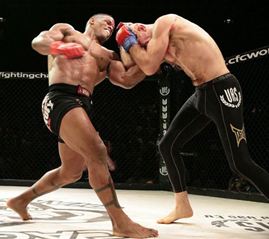
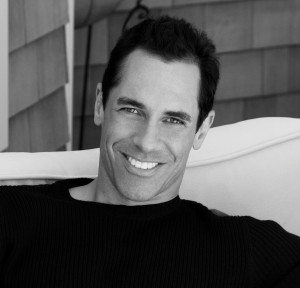

 Entries (RSS)
Entries (RSS)



